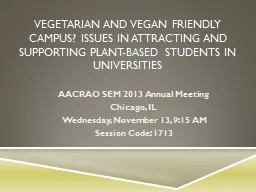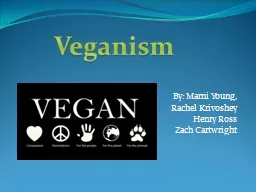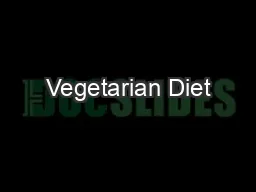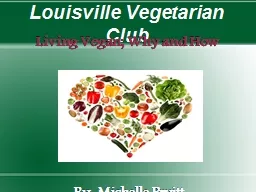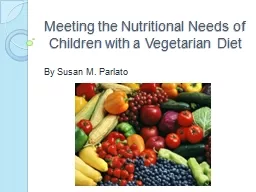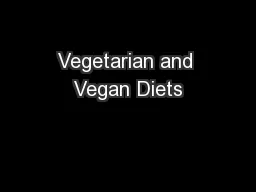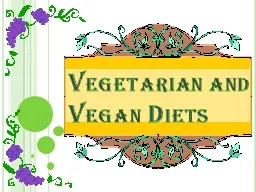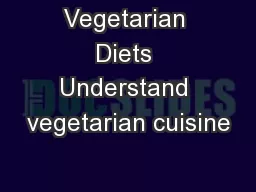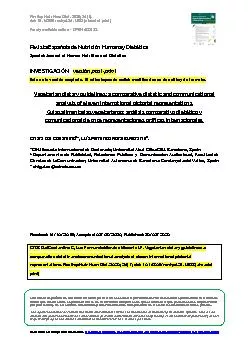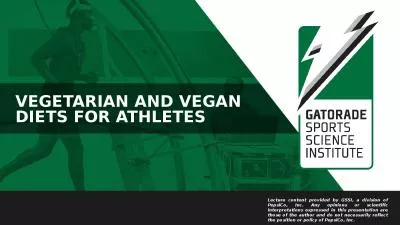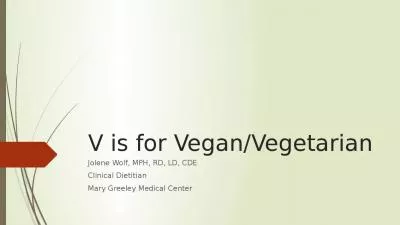PPT-Vegetarian and Vegan Friendly Campus? Issues in Attracting and Supporting Plant-based
Author : reimbursevolkswagon | Published Date : 2020-07-01
AACRAO SEM 2013 Annual Meeting Chicago IL Wednesday November 13 915 AM Session Code 1713 pRESENTERS Rodney Parks Registrar and Associate Professor Elon University
Presentation Embed Code
Download Presentation
Download Presentation The PPT/PDF document "Vegetarian and Vegan Friendly Campus? Is..." is the property of its rightful owner. Permission is granted to download and print the materials on this website for personal, non-commercial use only, and to display it on your personal computer provided you do not modify the materials and that you retain all copyright notices contained in the materials. By downloading content from our website, you accept the terms of this agreement.
Vegetarian and Vegan Friendly Campus? Issues in Attracting and Supporting Plant-based: Transcript
Download Rules Of Document
"Vegetarian and Vegan Friendly Campus? Issues in Attracting and Supporting Plant-based"The content belongs to its owner. You may download and print it for personal use, without modification, and keep all copyright notices. By downloading, you agree to these terms.
Related Documents

